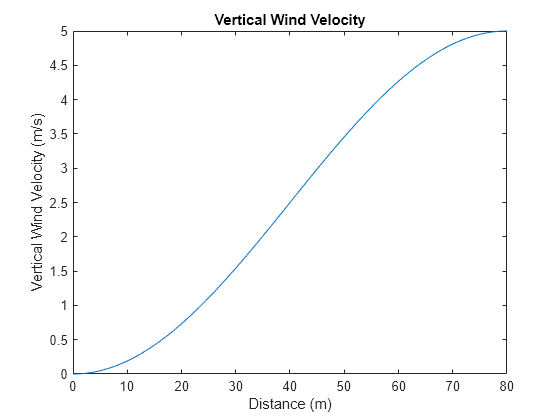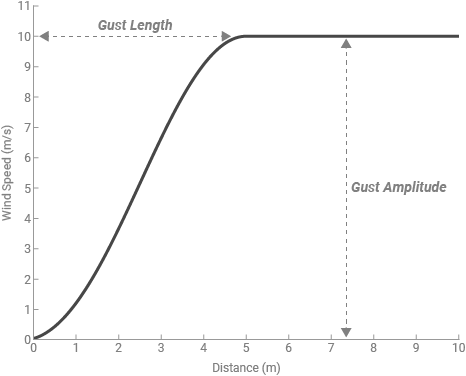uavWindGust
Description
The uavWindGust object generates a wind gust of the standard
“1-cosine” shape for a UAV platform. For more information on the gust shape, see 1-Cosine Gust Shape. To simulate a wind gust in a
UAV scenario:
Create the
uavWindGustobject and set its properties.Attach the wind model to a UAV platform by using the
addWindfunction.Obtain the wind velocity from the UAV scenario by using the
windVelocityfunction while the UAV scenario is running.
Note
Simulating a UAV scenario that contains a uavWindGust object requires
Aerospace Toolbox.
Creation
Description
gustWind = uavWindGust
gustWind = uavWindGust(Name=Value)uavWindGust(StartTime=10) sets the wind start time to 10
seconds.
Properties
Examples
More About
Version History
Introduced in R2024a

